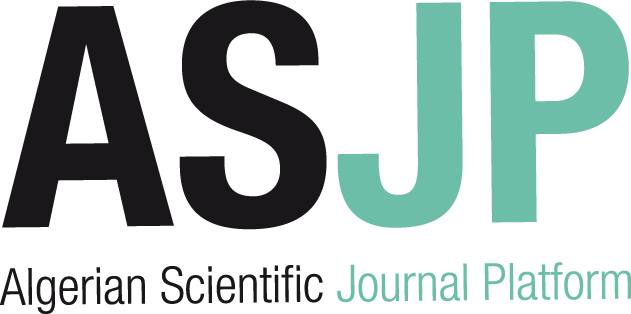| Titre : |
Forecasting road freight flows and resultant goods vehicle trafic and their number in Algeria |
| Type de document : |
texte imprimé |
| Auteurs : |
Adouane, Boualam, Auteur |
| Editeur : |
Cranfield : [s.n.] |
| Année de publication : |
1985 |
| Importance : |
118 f. |
| Présentation : |
ill. |
| Format : |
27 cm. |
| Note générale : |
Mémoire de Magistère : Economie : Cranfield Institute of Technology : 1985
Bibliogr. f. 119-122 . Annexe f. 123-177 |
| Langues : |
Anglais (eng) |
| Mots-clés : |
Forecasting -- road Freight flows Algeria Vehicle |
| Index. décimale : |
M006985 |
| Résumé : |
Algeria is the second largest African country, its main source of national income is petrolum and gas exports.
Algeria is self-sufficient in only a few commodities and relies heavily on imports.
This means that transport has a fundamental role to play at the national and international level for the development of Algeria's economy.
The objectives of this study are to develop a model for forecasting inter-wilaya freight flows by road in Algeria and a model for deriving resultant commercial cehicle traffic and their numbers.
The study starts by given reasons for using models rather than intuition when making forecasts.
It then describes the national setting and touches on the economic and social aspects in Algeria that have an influence on transport patterns and needs.
Subsequently it gives a description of the inland freight transport market in Algeria an evidence on the predominance of the road freight transport.
After that a model is suggested after carefully reviewing the state of the art in models of freight distribution.
With the aim of discussing its implications and testing its feasibility within the context of Algeria, the suggested model, the linear programming model, is experimented and its data requirements are discussed in chapters five and six while chapter seven is dealing with the procedure of how the resultant vehicle numbers can be derived.
It is found that only simple flexible mathematical models of transport systems in developing countries can be used economically to good advantage.
In any case, the case of analysis required to tackle the transport problems of a country exceeds the practical possibilities of manual analysis-models and computers can be cost effective in transport planning in any developing countries, when used properly. |
Forecasting road freight flows and resultant goods vehicle trafic and their number in Algeria [texte imprimé] / Adouane, Boualam, Auteur . - Cranfield : [s.n.], 1985 . - 118 f. : ill. ; 27 cm. Mémoire de Magistère : Economie : Cranfield Institute of Technology : 1985
Bibliogr. f. 119-122 . Annexe f. 123-177 Langues : Anglais ( eng)
| Mots-clés : |
Forecasting -- road Freight flows Algeria Vehicle |
| Index. décimale : |
M006985 |
| Résumé : |
Algeria is the second largest African country, its main source of national income is petrolum and gas exports.
Algeria is self-sufficient in only a few commodities and relies heavily on imports.
This means that transport has a fundamental role to play at the national and international level for the development of Algeria's economy.
The objectives of this study are to develop a model for forecasting inter-wilaya freight flows by road in Algeria and a model for deriving resultant commercial cehicle traffic and their numbers.
The study starts by given reasons for using models rather than intuition when making forecasts.
It then describes the national setting and touches on the economic and social aspects in Algeria that have an influence on transport patterns and needs.
Subsequently it gives a description of the inland freight transport market in Algeria an evidence on the predominance of the road freight transport.
After that a model is suggested after carefully reviewing the state of the art in models of freight distribution.
With the aim of discussing its implications and testing its feasibility within the context of Algeria, the suggested model, the linear programming model, is experimented and its data requirements are discussed in chapters five and six while chapter seven is dealing with the procedure of how the resultant vehicle numbers can be derived.
It is found that only simple flexible mathematical models of transport systems in developing countries can be used economically to good advantage.
In any case, the case of analysis required to tackle the transport problems of a country exceeds the practical possibilities of manual analysis-models and computers can be cost effective in transport planning in any developing countries, when used properly. |
|


 Ajouter le résultat dans votre panier
Visionner les documents numériques
Faire une suggestion Affiner la recherche
Ajouter le résultat dans votre panier
Visionner les documents numériques
Faire une suggestion Affiner la rechercheForecasting road freight flows and resultant goods vehicle trafic and their number in Algeria / Adouane, Boualam (1985)












